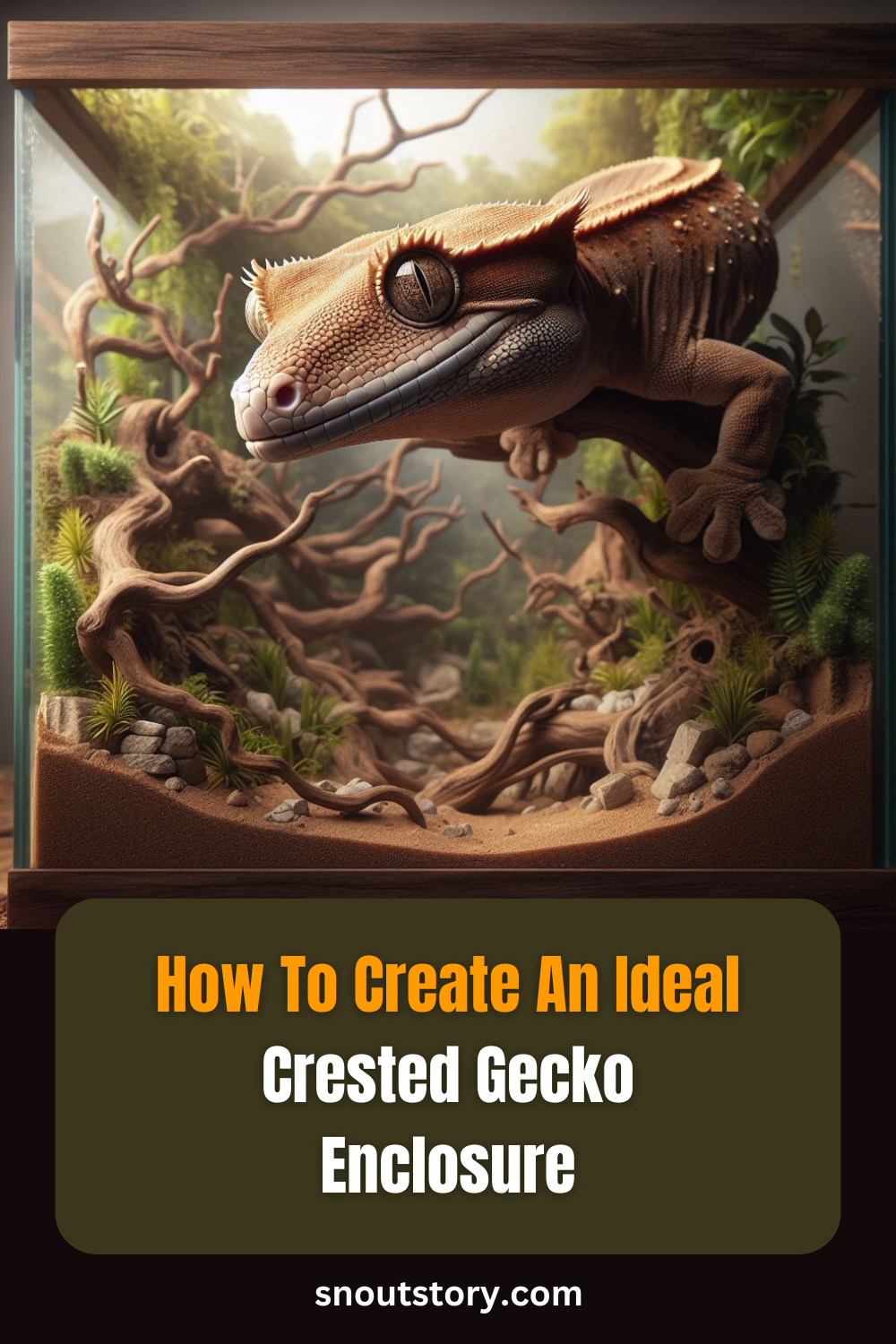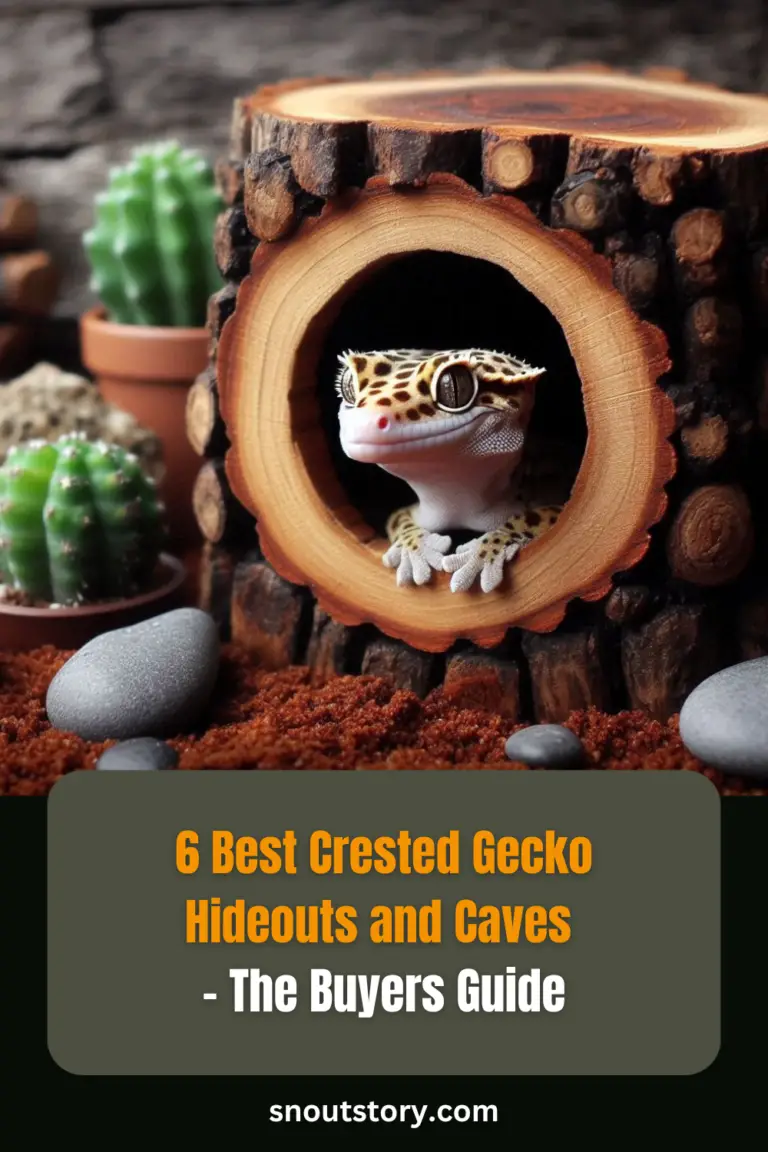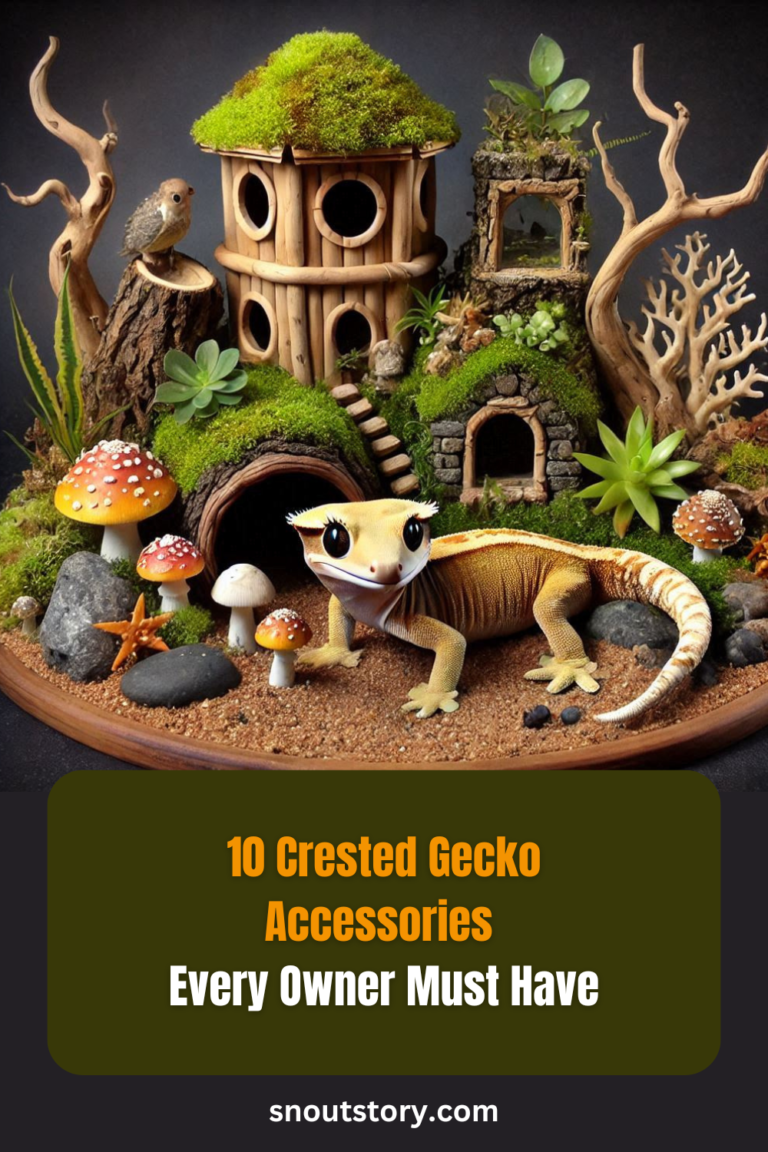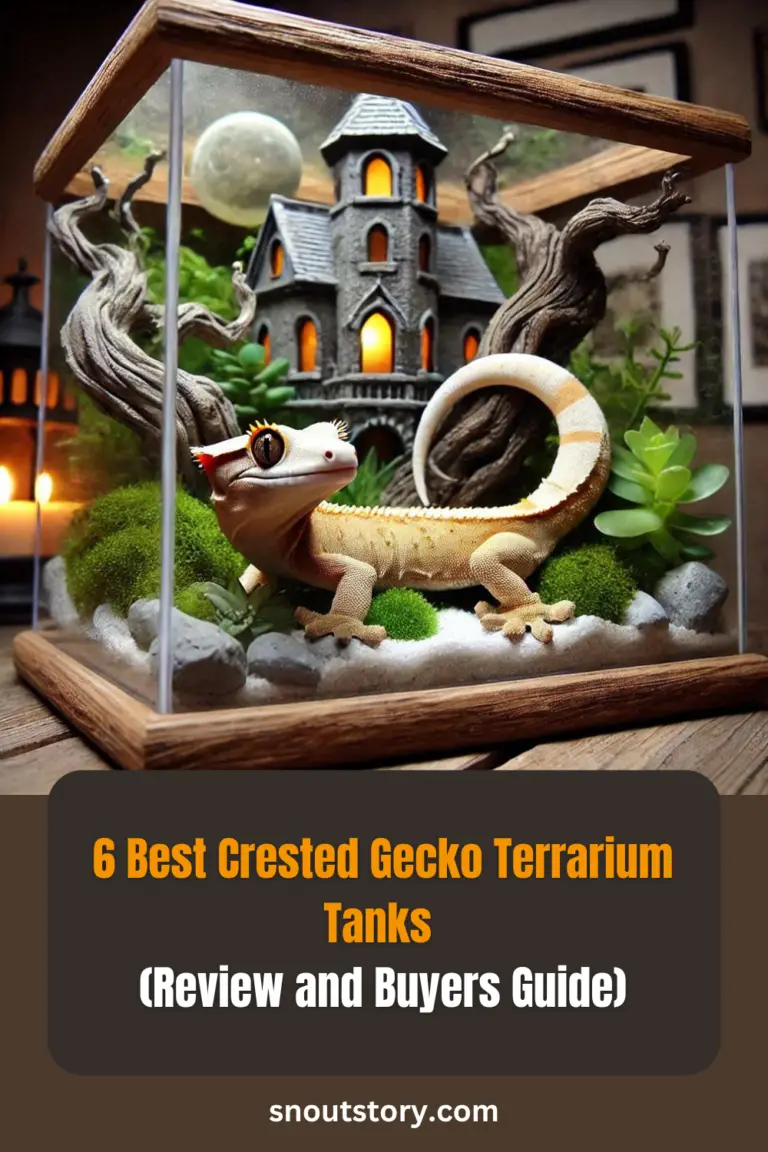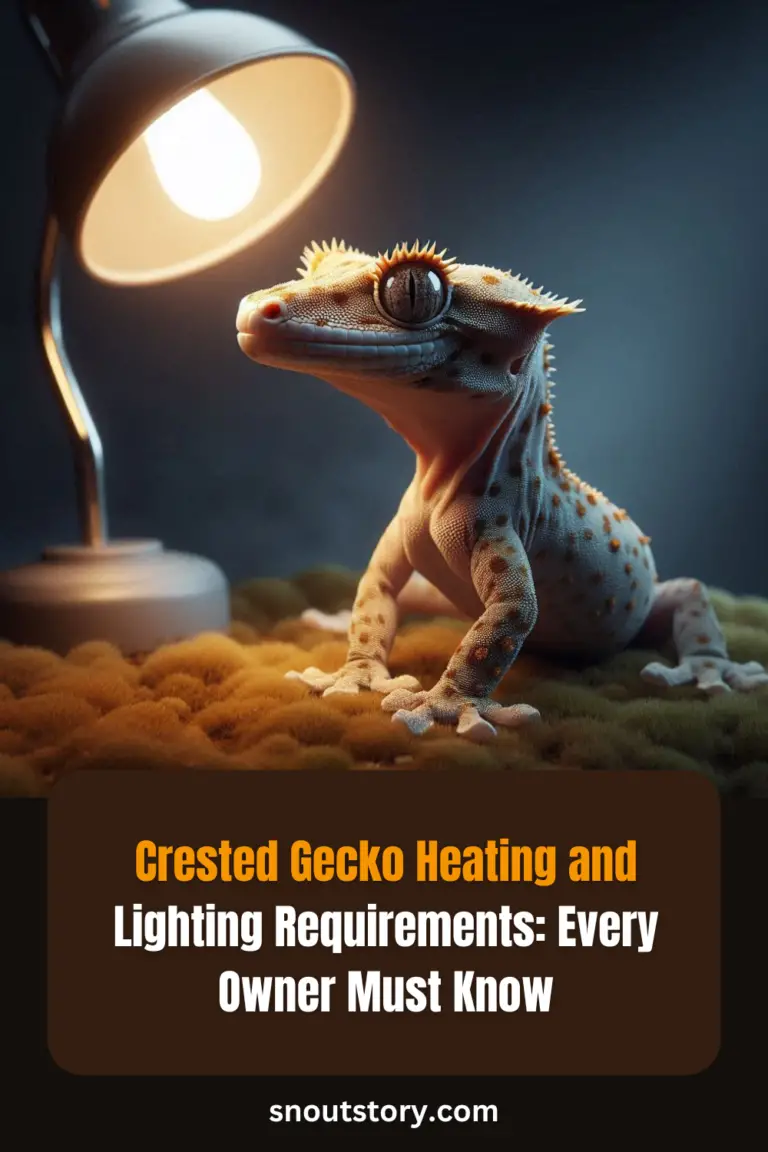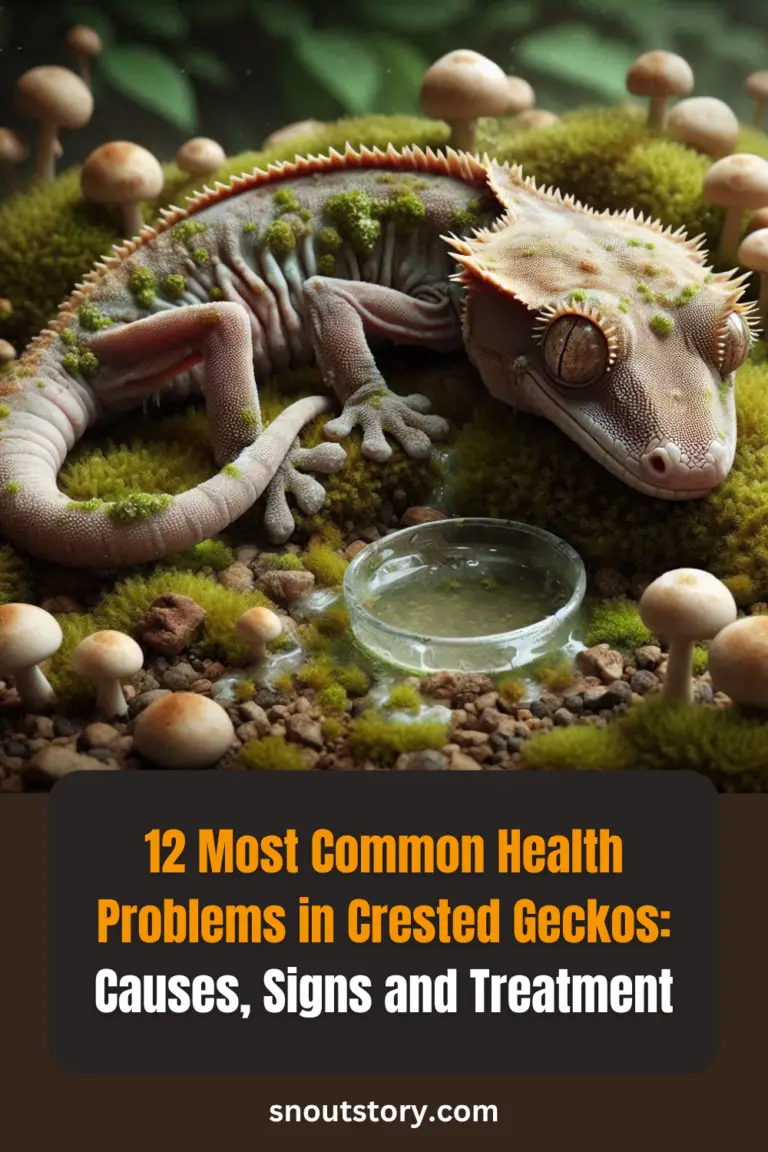Disclaimer
"This Blog is completely reader supported, for any purchase you make from affiliate links on this blog we earn a small commissions with no extra cost to you, which I use to feed my poor puppies"
Hello fellow reptile keepers, so you also want to create a enclosure for your crested gecko which will let them thrive and also be visually appealing? You are at the right place
Setting up the perfect enclosure for your crested gecko is essential to ensure they thrive in captivity. This guide will take you through the steps needed to create a habitat that not only meets their physical needs but also stimulates their natural instincts.
From choosing the right size terrarium to understanding the importance of temperature, humidity, and lighting, we’ll cover all the essential elements. Plus, we’ll provide tips on selecting the best substrate and decorations to make your crested gecko’s home both safe and inviting.
Whether you’re a seasoned gecko owner or just starting out, this information will help you craft a comfortable and engaging environment for your pet.
Designing a Habitat that Mimics the Natural Environment
Creating a habitat that closely mirrors a crested gecko’s natural environment is key to promoting their well-being and longevity. Start by selecting a vertical terrarium, as these geckos are adept climbers and enjoy navigating through heights.
For the interior, a mix of live plants like pothos or philodendrons not only adds to the visual appeal but also helps maintain humidity levels critical for your gecko’s skin and respiratory health. The substrate should be something that retains moisture without becoming soggy, such as coconut fiber or a mix of peat moss and soil, facilitating natural digging behavior. Additionally, incorporating branches and bark provides necessary climbing structures and hiding spots, simulating the dense foliage and varied textures of their habitat in New Caledonia.
By carefully considering these elements, you’re not just decorating a space; you’re reconstructing a piece of the wild that caters to the instinctual behaviors of your crested gecko, enhancing both their physical health and mental engagement.
Key Considerations for Choosing the Right Enclosure Size
Selecting the right enclosure size for your crested gecko is crucial for their health and happiness. A common recommendation is to start with a 20-gallon terrarium for one adult gecko, but if space and budget allow, opting for something larger can offer more opportunities for environmental enrichment.
A larger space not only supports better physical health through climbing and exploration but also reduces stress, which is critical for maintaining a robust immune system. It’s important to remember that these geckos are vertical climbers, so choosing an enclosure with ample height is as essential as its footprint. This setup encourages natural behaviors such as hunting and hiding, creating a more stimulating environment for your gecko.
If planning to house more than one gecko, ensure the space is ample enough to prevent territorial disputes and provide multiple basking and hiding spots. In summary, providing a spacious and well-structured habitat will help your crested gecko lead a vigorous and contented life.
some ideal size figures to go by when choosing right enclosure size for crested gecko’s
The ideal tank size for a single crested gecko should have a minimum dimension of 20 gallons, but a larger space is often recommended to provide ample room for climbing and exploring. Here are the suggested dimensions based on different needs:
1. For one crested gecko:
- Minimum size: 20 gallons
- Recommended dimensions: At least 12 inches long, 12 inches wide, and 24 inches high.
2. For two crested geckos:
- Minimum size: 29 gallons
- Recommended dimensions: At least 18 inches long, 18 inches wide, and 24 inches high.
For groups or breeding pairs, larger enclosures are necessary to ensure each gecko has enough space to establish its territory, reduce stress, and prevent aggression. A 40-gallon tank or larger can be beneficial, especially in dimensions that emphasize height over width to cater to their arboreal nature:
3. Large groups or breeding setups:
- Minimum size: 40 gallons
- Recommended dimensions: At least 36 inches long, 18 inches wide, and 24 inches high.
If you want to take my advice on choosing right tank for your crested gecko, this is the best tank I would like to suggest, I have been using this for my leopard geckos for around 3 years:
REPTI ZOO Reptile Glass Terrarium, 18″ x 18″ x 24″ Front Opening Terrarium with Double Hinge Door & Top Screen Ventilation, 30 Gallon Tank

Also here’s a list of 6 Best Crested Gecko Terrarium Tanks along with short review (Click Here to Read)
When setting up an enclosure, always prioritize vertical space to encourage natural climbing behavior. The use of taller tanks is crucial for the well-being of crested geckos, as they prefer to navigate and rest in elevated spaces.
What Is Optimal Temperature and Humidity Level For Crested Gecko Enclosure
Maintaining the right temperature and humidity in your crested gecko’s enclosure is essential for their health and well-being. The ideal temperature range during the day should be between 72 to 78 degrees Fahrenheit, with a slight drop to 68-70 degrees at night to mimic their natural environment. Here are two of the best Under-tank heaters on Amazon which we have been personally using for our bearded dragons and other geckos:
Aiicioo Under Tank Heater Thermostat – Reptile Heating Pad with Temperature Control Reptile Heat Mat

BN-LINK Reptile Heating Pad Electric Indoor Under Tank Terrarium Heating Mat

Avoid higher temperatures, as crested geckos are sensitive to heat, which can lead to stress and health complications.
Humidity levels are equally important, ideally maintained around 60-80%. This can be achieved by regular misting of the enclosure, usually twice a day—once in the morning and once in the evening. Additionally, incorporating a hygrometer will help you monitor these levels accurately. Proper humidity is critical for hydration and aids in the shedding process, ensuring your gecko remains healthy and active.
By consistently managing these environmental factors, you provide a habitat that supports the natural behavior and physiological needs of your crested gecko.
Selecting Suitable Substrate for Crested Gecko Enclosures
Choosing the right substrate for your crested gecko’s enclosure is a key factor in creating a comfortable and healthy environment for your pet. Coconut fiber and sphagnum moss are popular choices because they retain moisture well, which helps maintain the necessary humidity levels without becoming overly soggy.
These substrates also mimic the natural forest floor and are safe if accidentally ingested during feeding. For those seeking a cleaner, low-maintenance option, paper towels or reptile carpet can be used, especially in quarantine setups or for juvenile geckos, offering easy cleanup and minimal risk of impaction.
Finding good substrate can be a tiring and time consuming work for beginners and many reptile owners, so here’s a substrate we have been using personally for our Ball pythons and Leopard Geckos:
REPTI ZOO 72 Quart Reptiles Coconut Chip Substrate, Coco Husk Reptiles Bedding

Whichever substrate you choose, ensure it’s free of sharp edges or toxic chemicals to keep your crested gecko safe and healthy. Regular replacement and cleaning of the substrate are also crucial to prevent mold growth and reduce the risk of bacterial infections.
Setting-up Proper Lighting For Crested Gecko
Setting up proper lighting for your crested gecko is crucial, even though these nocturnal reptiles don’t require as much direct light as some other lizards. A low-level UVB light source can be beneficial for promoting natural behaviors and potentially aiding in vitamin D3 synthesis, though it is not strictly necessary if their diet is well supplemented.
The key is to provide a light cycle that mimics natural day and night patterns to help regulate their circadian rhythms. This can be achieved with a timer that turns lights on for 10-12 hours during the day and off at night.
UVB bulbs which are suitable for other reptiles may not be right for your crested geckos, because each reptile has different heating and basking requirements. So here is one you should go with for your crested gecko:
MRREPTILE UVB Reptile Light, 13W 5.0 UVB Bulb Light for Reptiles

Additionally, avoid placing any bright lights directly into the enclosure as crested geckos are sensitive to intense light. Providing some shaded areas within the enclosure will allow your gecko to escape the light if it chooses, ensuring it feels secure and comfortable in its habitat.
Establishing a Feeding and Watering Station
Establishing a proper feeding and watering station for your crested gecko is pivotal to its health and well-being. Start by placing shallow dishes that your gecko can easily access without the risk of tipping over.
For water, it’s essential to provide a fresh supply daily to ensure hydration and aid in the humidity of the habitat. Some owners prefer using water droplets on enclosure walls or plants, as crested geckos often drink from these surfaces in the wild, or you can go with a dedicated water bowl in corner which will also act as a mini-pond and improve you enclosure aesthetics. You can consider the one given below, it looks very natural and blends in perfectly with the overall setup:
Fluker’s Food and Water Reptile Corner Bowl

For feeding, offer a diet mainly consisting of commercial crested gecko food, which is balanced for their nutritional needs, complemented by occasional treats of live insects such as crickets or dubia roaches dusted with calcium powder.
Ensure the food dish is cleaned and refilled regularly to maintain freshness and prevent spoilage, and monitor your gecko’s intake to adjust portions as necessary, promoting a healthy diet routine that mimics their natural feeding habits.
Implementing Regular Maintenance Practices for a Healthy Enclosure
Implementing regular maintenance practices is crucial for maintaining a healthy enclosure and ensuring your crested gecko thrives. Daily tasks should include checking and adjusting humidity and temperature levels, as well as refreshing the water supply to help maintain proper hydration and environmental moisture.
Weekly, it’s important to remove any uneaten food to prevent mold and bacterial growth. Conduct a thorough cleaning of the substrate and decorative items at least once a month, replacing anything that cannot be thoroughly cleaned.
Additionally, a full habitat deep clean every few months will help prevent the accumulation of harmful pathogens, ensuring your gecko’s home remains a safe and healthy environment.
By establishing these routine care practices, you not only safeguard the health of your crested gecko but also create an engaging and clean space for your pet to explore and enjoy.
Summary
In summary, creating an ideal enclosure for your crested gecko involves several key steps that contribute to their overall health and happiness. From selecting the appropriate size and type of terrarium that offers plenty of vertical space for climbing, to ensuring the environment is equipped with the correct temperature and humidity levels, every detail matters.
The choice of substrate, the arrangement of plants and decorations, and the setup of a proper lighting system are also crucial for mimicking their natural habitat and encouraging normal behaviors. Moreover, establishing a consistent feeding and watering routine, along with regular maintenance of the enclosure, will keep your crested gecko healthy and active.
By following these guidelines, you’ll provide a safe and stimulating environment that allows your crested gecko to thrive, enhancing both their quality of life and your experience as a pet owner.
Grid

Vedant Narvekar is an experienced digital marketing expert with a profound love for nature and animals. With a career rooted in leveraging online platforms to drive engagement and promote meaningful causes, Vedant’s passion for animals inspired him to start Snout Story—a blog dedicated to educating people about pet keeping and sharing proper knowledge about caring for animals. Drawing on his expertise in digital marketing, Vedant utilizes his platform to advocate for responsible pet ownership, providing valuable insights on pet care, training, nutrition, and more. Through Snout Story, Vedant aims to empower pet lovers with the information they need to provide the best possible care for their furry companions, while also fostering a deeper appreciation for the natural world and the creatures that inhabit it.

